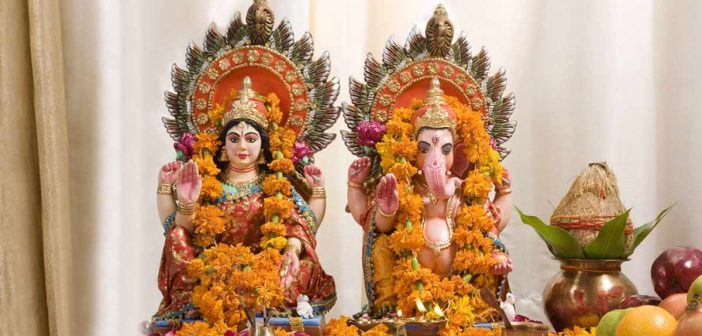Lakshmi Pooja, celebrated this year on November 1st, marks the primary day of Diwali in much of India. Dedicated to Goddess Lakshmi, the deity of wealth and prosperity, this ritual is a time to invite abundance into homes and businesses. With roots deep in Hindu tradition, the day is also one of devotion to Ganesha, the remover of obstacles, alongside the veneration of symbols of prosperity.
Cultural and Spiritual Significance
Lakshmi Pooja holds great importance as it combines spiritual devotion with cultural customs meant to bring wealth and happiness into the family’s life for the coming year. Families begin preparations days ahead by cleaning and decorating their homes with fresh flowers, intricate rangoli designs, and oil lamps (diyas), which are believed to guide Goddess Lakshmi to their households. The act of cleaning is symbolic, as it represents a space free from negativity, ready to welcome prosperity.
Rituals of Lakshmi Pooja
The rituals typically commence after sunset during the Pradosh Kaal (auspicious evening time), which for 2024 falls between 5:36 PM and 8:11 PM. To invite Lakshmi, households set up a shrine with images or idols of Lakshmi and Ganesha, placing them on a clean, decorated platform along with items like grains, coins, and flowers as offerings. The family then recites Vedic chants and prayers, seeking blessings for a prosperous year ahead. Special sweets are prepared, symbolizing abundance, and distributed among family members as well as friends.
The diya lighting is a significant part of the ritual as well, symbolizing light’s triumph over darkness and ignorance. As the diyas illuminate the home, it is said that the blessings of Lakshmi become present in every corner.
Regional Variants and Local Practices
Across India, Lakshmi Pooja is celebrated with unique local adaptations. In Maharashtra, the ritual includes an extensive offering to various deities along with Lakshmi, a tradition believed to ensure all-round well-being. Gujarat sees households honoring Lakshmi by setting up elaborate designs and dedicating an entire day to fasting before the pooja. In West Bengal and Odisha, however, this day coincides with Kali Puja, where Goddess Kali, a fierce avatar symbolizing the defeat of evil, is worshiped along with Lakshmi.
Symbolic Decor and Offerings
In various parts of India, specific items are seen as especially auspicious during the pooja. For example, lotus flowers, linked to Goddess Lakshmi, are essential, representing beauty, fertility, and spiritual enlightenment. Coins are often placed at the altar, symbolizing wealth and prosperity, while fresh fruit and sweets signify an abundant harvest and the hope for more in the future. Some also place books and account ledgers near the deities, particularly among business owners who seek blessings for a prosperous fiscal year.
The Broader Context of Diwali
Lakshmi Pooja is one part of the multi-day Diwali festival, which spans five days in many parts of India. These days hold layered meanings— from Naraka Chaturdashi, which signifies the banishment of evil, to Govardhan Puja, celebrating gratitude for nature, and finally Bhai Dooj, which honors sibling bonds. Each of these days adds to the spirit of family unity, communal harmony, and personal growth that Diwali encapsulates. In contemporary times, Diwali and Lakshmi Pooja have become as much about religious celebration as about family, friends, and shared joy.
Lakshmi Pooja during Diwali serves as a reminder of India’s rich cultural heritage, emphasizing values of gratitude, prosperity, and communal well-being. This day not only holds spiritual importance but has evolved into a festival that brings together communities to celebrate the timeless themes of light, prosperity, and togetherness.





